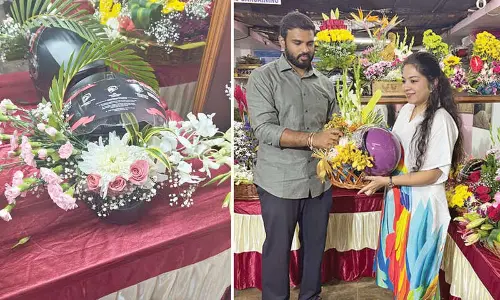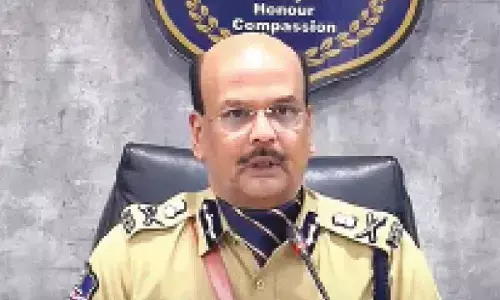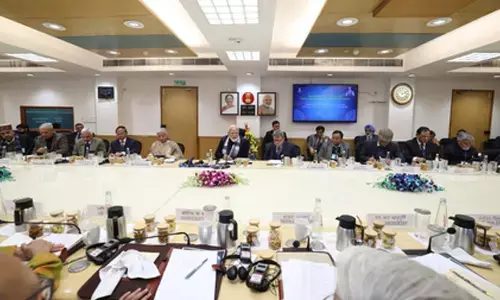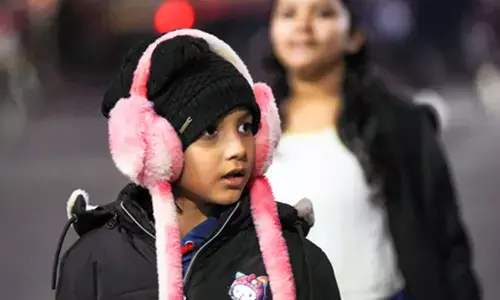The Sunshine Festival
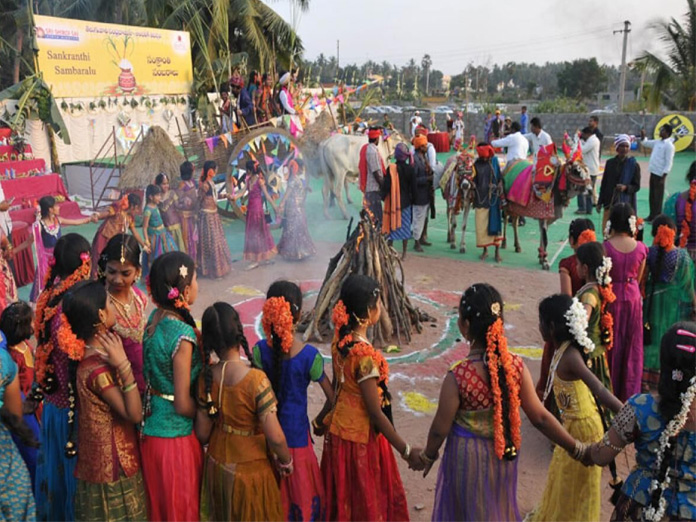
Blue skylines are highlighted by colourful kites, rangolis reflecting skill and artistic beauty dot the earth, there is bounty that comes from the harvest of crops and all life forms embrace the radiance and warmth of sun rays The lethargy induced by the winter chill gives way to new beginnings and the air is rife with celebration symbolised by decorations of marigold garlands and mango leaves, s
Blue skylines are highlighted by colourful kites, rangolis reflecting skill and artistic beauty dot the earth, there is bounty that comes from the harvest of crops and all life forms embrace the radiance and warmth of sun rays. The lethargy induced by the winter chill gives way to new beginnings and the air is rife with celebration symbolised by decorations of marigold garlands and mango leaves, sugarcane, jaggery, freshly grown rice, sesame seeds and berries of every kind. Makara Sankranti, one of the few ancient Indian festivals observed according to the solar cycle, is the first of a series of festivals beginning with the auspicious ‘Uttarayana’ (northward movement) period and celebrated a fortnight after the new calendar year is ushered in.
Known by different names in most parts of the country, the festival symbolises peace and prosperity and renewed enthusiasm spurred by new beginnings. The burning of old stuff in the ‘bonfire’ made on ‘bhogi’ the day preceding the Sankranti festival is a symbolic gesture that stands for breaking away from the past. The celebrations associated with the festival that lasts for three to four days in the rural pockets of our country bring alive its rich culture and heritage, reverence and worship of flora, fauna and cattle and music and dance in the form of ‘gobbemma patalu’.
The ‘gobbemma’ songs like the ‘bathukamma’ songs revolve around folklore and mythology as also everyday occurrences in the hamlets dotting the countryside where women sing and dance around the ‘gobbamma’ (a ball made of cow dung symbolising the goddess Gauri). Lively songs in praise of Krishna, the quintessential cowherd are a regular theme here and we even have the great saint composer Annamayya‘s keerthana ‘Kolani dopariki gobbilo, Yadukula swamikini gobbillo’ in praise of Lord Krishna composed in this style. Sankranti essentially combines in itself a joyous rendering of songs that worship all of creation and the creator. In the urban areas lacking the scenic beauty of the countryside, celebrations in places like the ‘Shiparamam’ in the Telugu States, educational institutions and cultural forums include the creation of vibrant and beautiful locales reminiscent of our green villages.
The ‘Surya Siddhanta’, which is a textbook of Hindu astronomy talks about the Uttarayana period derived from Uttara (north) and Ayana (movement) as the northward movement of the earth on the celestial sphere. The movement that begins a day after the winter solstice on December 21 continues for a six-month period up to the summer solstice in June. The six months of Uttarayana are equated with a ‘day’ of Lord Vishnu while the remaining months of Dakshinayana are the ‘night’. The Dakshinayana period characterised by purification culminates in Uttarayana a period of enlightenment, receptivity, grace and learning according to our scriptures. Spiritual seekers are aware of the immense grace available with the onset of Uttarayana with Sankranti rightly signifying the beginning of new leaning and learning.
The story from the Mahabharata war, where the mighty Bhishma injured in the war lay down on a bed of arrows (ampashayya) waiting for the auspicious period of the Uttarayana to set in to breathe his last and attain moksha (liberation) tells us that this was also a period for the attainment of liberation. Gautama Buddha, as well as many saints and Yogis from our country, are also said to have attained ‘Samadhi’ or liberation during this period. Sankranti, therefore, ushers in a period of learning and movement towards higher goals along with rituals that celebrate wealth and prosperity. Elevated thoughts, higher goals and knowledge are available to spiritual seekers with greater force, particularly in the first half of the Uttarayana until the equinox in March.
In rural pockets, the sprinkling of courtyards with cow dung was done as a purification ritual to keep pests and insects away from the bountiful harvest. The many rangolis drawn with rice flour and vibrant colours are also interestingly named after flowers (padmam, nagavalli) and chariots (ratham) according to the patterns drawn. This special feature of Sankranti has become so popular that apart from rangoli competitions we now see this ‘Sankranti muggulu’ not just in our courtyards but on walls, ceilings, paper bags and even on saree borders as symbols of cherished traditions. So beautiful are these skilful creations that people from all over the world are in awe of their aesthetic appeal.
Sankranti is a festival known for its delicious seasonal preparations with sesame seeds (nuvvulu) as the main ingredient. Sesame seeds are used for charity oblation and preparation of sweets along with jaggery ensuring good health during the transition from the cold winter to warmer days. Sesame seed sweet delicacies are common throughout the country while the traditional rice kheer cooked in a new clay pot, are popular in the Telugu States and Tamil Nadu. Apart from feasting, worship of nature, farm implements and livestock during this period make Sankranti a unique festival which sees a blossoming of material, emotional and spiritual aspects of life.
There are many aspects of this festival that binds families and communities together that have undergone a sea change over the years. The migration of youth, who have taken up jobs in big cities and countries outside India, viewing agriculture as a risky and unviable occupation and the plight of small and marginal farmers who are unable to make ends meet due to lack of policies with long term implications have made this festival a pale reflection of what it used to be.
Traditional rituals associated with the worship of decorated bulls known as ‘gangireddulu’ is slowly becoming extinct along with the Satani and other tribes dependant on typically rural vocations. As rural areas are caught in the throes of transition there is a price to be paid. One can only hope that governments can ensure that our villages prosper without losing their traditional flavour and prosperity. Where there is true prosperity Sankranti becomes a joyful ode to creation and elements that are life sustaining. It is truly a time to bask under the glory of the sun and offer salutations for its nurturing qualities of health, wealth and victory.









